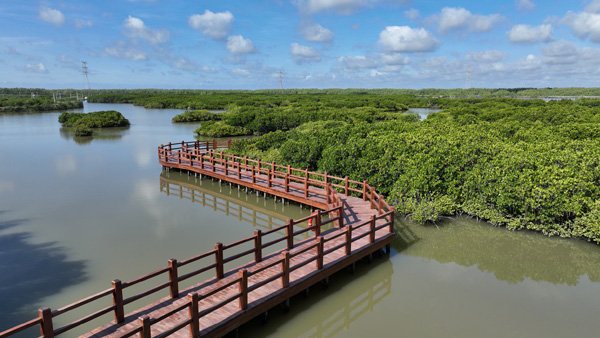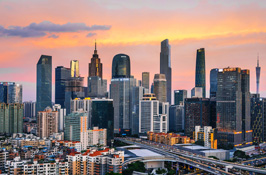Mangrove protection spurs ecological improvements
Zhanjiang city is concentrating efforts to build its mangrove area on Jinniu Island into a first-class model of beauty and biodiversity in Guangdong province.
Zhanjiang has invested a total of 38.42 million yuan ($5.34 million) to promote the construction of 11 green and beautiful Guangdong demonstration sites, driving the continuous improvement of the city's ecology.
The area of mangroves in Zhanjiang is about 6,398 hectares, accounting for 60.1 percent of the province's mangrove area and 23.7 percent of the national total.
At the end of 2021, Zhanjiang began to build the "City of Mangroves", uniting its efforts to develop the mangroves into a new business card for ecology and a new highlight for beautiful and green Guangdong.

The mangrove plants in Zhanjiang. WU DONGJUN/FOR CHINA DAILY
Zhanjiang has issued a mangrove protection and restoration plan for 2021-25 and an action plan, actively promoting the construction of two large mangrove demonstration areas in Leizhou and Xuwen and accelerating the planting, protection and restoration of mangroves. The city has completed afforestation of mangroves covering an area of 1,273 hectares and restored 1,553 hectares.
Zhanjiang's ecological improvement stems from the determination and intensity of governance. Since 2023, Zhanjiang has promoted the implementation of seven campaigns for ecological improvement. Among them are the enhancement initiative for protecting ancient and noted trees and the action to encourage local residents to love, plant and protect greenery.
It is estimated that by the end of 2027, Zhanjiang will complete several projects for beautifying both urban and rural areas, involving a forest town, five forest villages and two villages featuring ancient trees.
Official data show that in 2023, Zhanjiang's comprehensive air quality index ranked second in Guangdong, with an annual average concentration of particulate matter PM2.5 at 20 micrograms per cubic meter of air.



 Print
Print Mail
Mail

